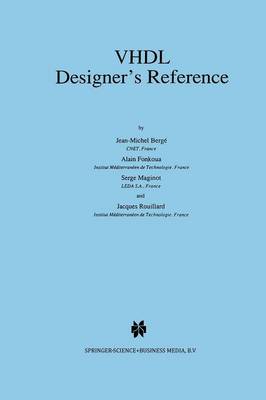too vast, too complex, too grand ... for description. John Wesley Powell-1870 (discovering the Grand Canyon) VHDL is a big world. A beginner can be easily disappointed by the generality of this language. This generality is explained by the large number of domains covered - from specifications to logical simulation or synthesis. To the very beginner, VHDL appears as a "kit". He is quickly aware that his problem may be solved with VHDL, but does not know how. He does not even know how to start. In this state of mind, all the constraints that can be set to his modeling job, by using a subset of the language or a given design methodology, may be seen as a life preserver. The success of the introduction of VHDL in a company depends on solutions to many questions that should be answered months before the first line of code is written: * Why choose VHDL? * Which VHDL tools should be chosen? * Which modeling methodology should be adopted? * How should the VHDL environment be customized? * What are the tricks? Where are the traps? * What are the differences between VHDL and other competing HDLs? Answers to these questions are organized according to different concerns: buying the tools, organizing the environment, and designing. Decisions taken in each of these areas may have many consequences on the way to the acceptance and efficiently use of VHDL in a company.
- ISBN13 9781461365518
- Publish Date 27 September 2012 (first published 31 May 1992)
- Publish Status Active
- Publish Country US
- Imprint Springer-Verlag New York Inc.
- Edition Softcover reprint of the original 1st ed. 1992
- Format Paperback
- Pages 455
- Language English
